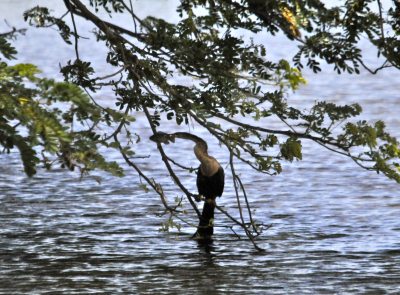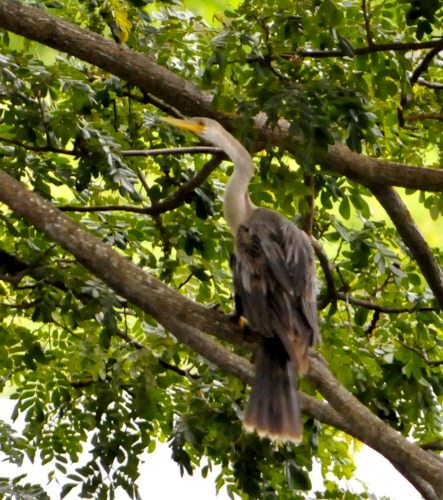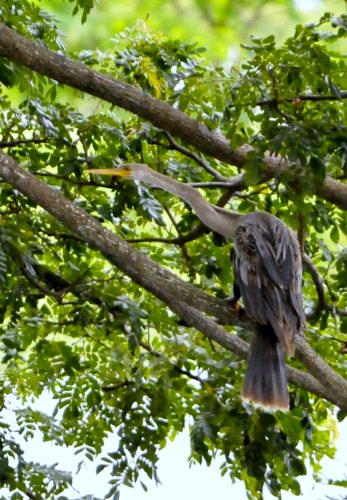Anhinga

|
Anhinga
-
  You don't see many signs like
this at St Mellion or St Andrews. We were lucky enough to see said creature lurking in the shallows
 Black-crowned Heron hiding in
the deep shade waiting on a fish AND watching the caiman
below
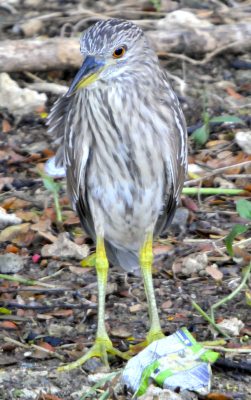 Gray Heron - A little chap
also watching the caiman from the safety of the bank
  Strutting and hunting - Large White or Great Egret
 Common or Smooth-billed
Ani
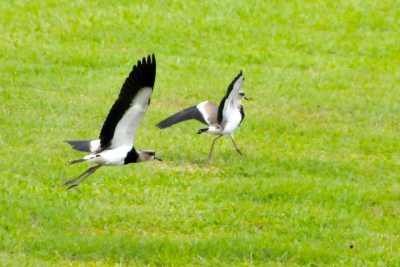  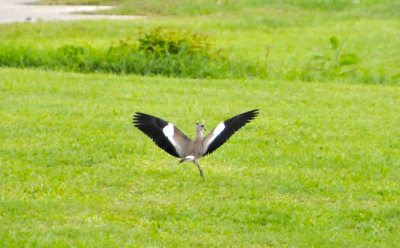 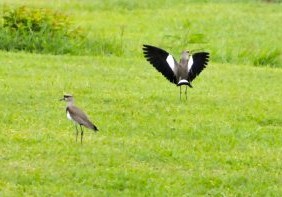 The Southern Lapwing showing
their beautiful wing patterns on landing
Just inside the main gates of Tobago Plantation (our home for two weeks) is a large lake with an amusing sign - Caiman in Lake. There are many visiting birds of the usual variety but one of them a very odd looking creature we now know to be the anhinga. Straight to the internet cafe to find out more. The Anhinga (Anhinga anhinga), sometimes called Snakebird, Darter, American Darter or Water Turkey, is a water bird of the warmer parts of the Americas. The word "anhinga" comes from the Brazilian Tupi language and means devil bird or snake bird. It is a cormorant-like bird with an average body length of thirty five inches, a wingspan of forty five inches and a weight of forty eight ounces. It is a dark-plumaged piscivore with a very long neck, and often swims with only the neck above water. When swimming in this style the name Snakebird is apparent, since only the coloured neck appears above water the bird looks like a snake ready to strike. Unlike ducks, the Anhinga is not able to waterproof its feathers using oil produced by the uropygial gland. Consequently, feathers can become waterlogged, making the bird barely buoyant. However, this allows it to dive easily and search for underwater prey, such as fish and amphibians. It can stay down for significant periods.
The male Anhinga drying off as his wife looks on When necessary, the Anhinga will dry out its wings and feathers. It
will perch for long periods with its wings spread to allow the drying process,
as do cormorants. If it attempts to fly while its wings are wet, it has great
difficulty getting off the water and takes off by flapping vigorously while
'running' on the water. Anhinga will often search for food in small
groups. Distribution and migration: Anhinga species are found all over the world in warm shallow waters. The
American Anhinga has been subdivided into two subspecies, A. a. anhinga and A. a. leucogaster, based on their
location. A. a. anhinga can be
found mainly east of the Andes in South
America and also the islands of Trinidad
and Tobago. A. a. leucogaster
can be found in the southern United
States, Mexico, Cuba and Grenada. Only birds that live in the extreme north and south of their range
migrate and do so based on temperature and available sunlight. Anhingas will migrate towards the equator during winter but this range is "determined by the amount of
sunshine to warm the chilled birds". Although not in their usual range, anhingas
have been found as far north as the states of Pennsylvania and Wisconsin in the US. Kettles - what a great group name - of anhingas often migrate with other birds and have been described as resembling black paper gliders.
Physical description and taxonomy:
The bill is long (about twice the length of the head), sharply
pointed and yellow as are the webbed
feet. Most of the male Anhinga's body is a glossy black green with the
wings, base of wings, and tail being a glossy black blue. The tip of the tail
has white feathers. The back of the head and the neck have elongated feathers
that have been described as gray or light purple white. The upper back of the
body and wings is spotted or streaked with white. The female Anhinga is similar to the male Anhinga except that it has a pale gray-buff or light brown head, neck, and upper chest. The lower chest or breast is a chestnut color and as compared to the male, the female has a more brown back. The hatchling starts out bald but gains tan down within a few days of hatching. Within two weeks the tan down has been replaced by white down. Three weeks after hatching, the first juvenile feathers appear. Juveniles are mostly brown until first breeding after the second or third winter. This bird is often mistaken for the Double-crested Cormorant due to its similar size and behavior. However, the two species can be differentiated by their tails and bills. The tail of the anhinga is wider and much longer than that of the cormorant. The bill of the anhinga is pointed, while the bill of the cormorant has a hook-tip.
Male with fish stabbed ready to be flipped and swallowed. Hiding in the tree to dry off Conservation status: The Anhinga is protected in the US under the Migratory Bird Treaty Act of 1918. The number of individual anhingas has not been estimated but they are considered to be of least concern because of the frequency of their occurrence in their 5,800,000 square miles global range.
Female at roost
ALL IN ALL AN INTRIGUING BIRD - THE ANHINGA |


